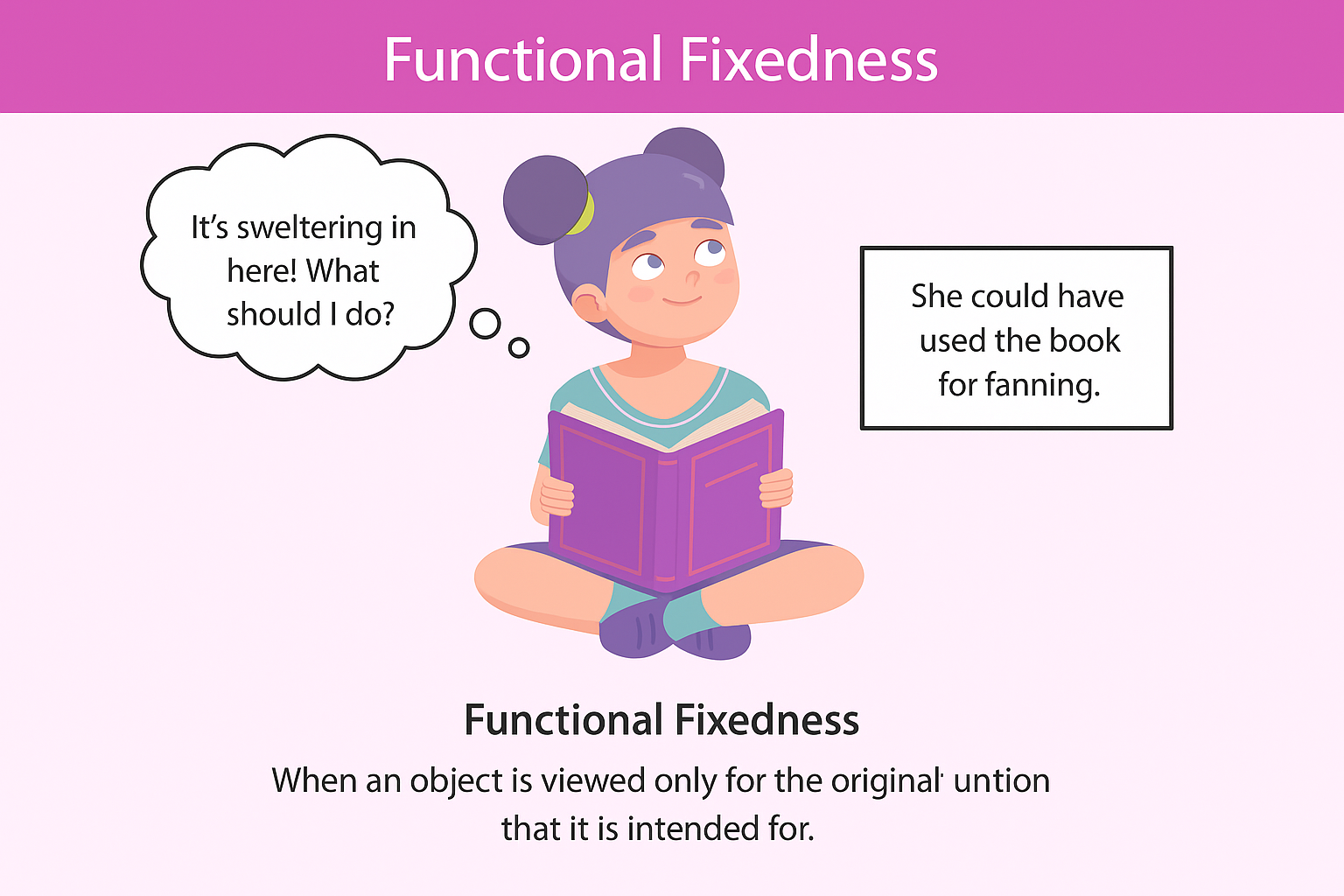🧠 Functional Fixedness: When Creativity Gets Stuck
Functional fixedness is a cognitive bias that limits a person to using an object only in the way it is traditionally used. It’s one of the most common mental blocks people face during problem-solving — and it's a frequently tested concept on the MCAT.
🧠 MCAT Definition
Functional Fixedness = A mental block against using an object in a new way
🔒 Think: "One use only" mindset
This shows up in MCAT Psychology passages testing critical thinking, bias, and behavior. It often appears alongside concepts like problem-solving, heuristics, and mental set.
🧪 Example Scenarios
| Problem | Fixed Response | Flexible Insight |
|---|---|---|
| Locked out, holding a paperclip | Wait for help | Use clip to pick the lock |
| Book in hand, room is hot | Just keep reading | Use the book as a fan |
| Candle, matches, tacks in a box | Ignore the tack box | Use the box as a candle holder (Duncker’s experiment) |
🧬 Mnemonic to Remember
🧠 “Functionally Fixed = Forgotten Flexibility”
If you’re stuck thinking inside the box, you’ve got functional fixedness.
📘 MCAT Tip
This often shows up in “choose the explanation” or “identify the bias” style questions. Pair it with related terms:
Mental Set – same solution used again
Confirmation Bias – favoring evidence that fits your view
Heuristics – shortcut methods that bypass deeper thinking
🚀 Learn Visually with King of the Curve
With KOTC, you can:
🔁 Review concepts with 1,000+ visual flashcards
🎮 Play gamified quizzes to retain terms faster
🧠 Strengthen recall with daily adaptive review
🧩 Understand real exam logic with MCAT-style Qs
📲 Try it FREE now at
kingofthecurve.org/free-lifetime
✅ Call to Action
Want more visual breakdowns like this one?
💡 Join King of the Curve for 1000+ exam-ready concepts with stunning illustrations, daily challenges, and adaptive review tools.
Start free at kingofthecurve.org/free-lifetime
✅ Conclusion
Functional fixedness is a subtle but powerful mental barrier that limits creativity and problem-solving. Recognizing this bias can help you unlock alternative uses for everyday objects and sharpen your cognitive flexibility — a critical skill for both real-world thinking and high-scoring MCAT answers.
Frequently Asked Questions (FAQs)
-
Aim for 4-6 focused hours, ensuring you incorporate breaks to avoid burnout.
-
Practice mindfulness techniques, take practice exams under realistic conditions, and maintain a balanced lifestyle.
-
Set short-term goals, seek support from mentors, and reward yourself for small achievements.
-
Regular exercise improves focus, reduces stress, and enhances overall mental clarity.
-
KOTC offers personalized learning tools, gamification features, and adaptive question banks to help students stay on track without burnout.


